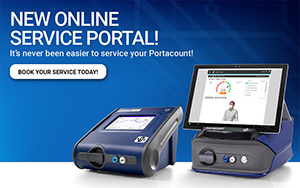Chemical, Biological, Radiological, Nuclear & Explosives
From consulting, sourcing, and supplemented with a comprehensive life cycle service program, Concept Controls is a growing force in the CBRNe Detection market.Intelligent CBRNe detection & integration
Concept Controls is proud to represent innovative CBRNe solutions to the Canadian marketplace. From consulting, sourcing, and supplemented with a comprehensive life cycle service program, Concept Controls is a growing force in the CBRNe Detection market. Whether it is portable, fixed, or integrated platforms, we are able to provide solutions for our Canadian military, CBRNe, Hazmat, and related agencies. Trust Concept Controls to take the guesswork out of finding the right protection you need. With our access to the most trusted and recognized brands, customers enjoy peace of mind when choosing Concept Controls.CHEMICAL
The rapid identification and qualitative and quantitative determination of the unknown agent is necessary for the selection of adequate protective measures (protective masks and clothing as well as medical treatment), the mapping of contamination area and decontamination procedures. For onsite verification, especially involving chemical weapon agents, several handheld detection devices are available, including:
- Three Color Detector paper
- Residual Vapor Detection Kit
- Water Poison Detection Kit
- Chemical Agent monitors
4 TYPES OF POINT DETECTION
- Ion mobility spectrometers (IMS)
- Gas chromatograph (GCs)
- Differential Optic Absorption Spectrometry (UV-DOAS)
- Electrochemical sensors (EC)
From handheld portables to dedicated standoff detection platforms, Concept Controls is the consultant of choice. We have a comprehensive Chemical detection offering which includes tried and true technology, along with newer innovative solutions. Whether the need is for a personal detector, area/event protection, or platform mounted detection systems, Concept Controls has the knowledge, experience, and sourcing networks to provide the best experience for our customers. Further, Concept Controls is an entirely Canadian company that supports international partners to meet and exceed ITB sourcing mandates.
BIOLOGICAL
Biohazards represent an important issue in the field of security, both for the destructive potential and the psychological, economic and social impact that the use of biological agents for biowarfare could have on populations. Early identification of an intentional biological event is essential to ensure correct management and response to the emergency.
POINT-DETECTION SYSTEMS
Point-detection systems may be specific or non-specific, depending on their ability to discriminate a definite biological agent once the analysis is performed. Non-specific detection systems are only able to determine if a biological agent is present, without providing any identification. On the other hand, specific point-detection systems are able to return an identification of the biological agent.
Non-Specific Point-Detection Systems
- Particle sizers
- Fluorescence based systems
- Viable particle size samplers (impactors)
- Virtual impactors
- Specific Point-Detection Systems
- Molecular biology techniques (PCR)
- Flow cytometry
- Mass spectrometry
- Immunoassay technologies
Radiological
- Film badge dosimeter
- Quartz fiber dosimeter
- Solid state (MOSFET or silicon diode) dosimeter
- Thermoluminescent dosimeter
- Ionization chambers
- Proportional counters
- Geiger counters
- Semiconductor detectors
- Scintillation detectors
- Airborne particulate radioactivity monitoring
Nuclear
Respiratory
- Level of respiratory hazard?
- What are the possible contaminants?
- Are the contaminants gas, particulates or vapour?
- Duration of exposure?
- Fit Factor Customization
- Fast effective fit testing
- Run multiple fit tests in one session
- Fit checks all respiratory masks
EnviroCloud
CBRNE/CBRNE REMOTE MONITORING & THREAT DETECTION SYSTEM
EnviroCloud Live is a vendor-agnostic remote monitoring system that collects data from CBRNe field devices and brings the data online. Operational staff can view and analyze CBRNe data in real-time. The system allows agencies to receive reports and warnings for all chemical, biological, radiological, or nuclear threats.
- Collect data from chemical, biological, radiological, nuclear & explosive detectors
- Works with any HSE and CBRNe devices from manufacturers such as RAE Systems, TSI, Rigaku, Environics, and Bertin Interface with any CBRNe device without the need for deprecable custom integration hardware
- Complete real-time monitoring system that works on desktops, tablets, and mobile devices
- Aggregate data and information; display videos from surveillance cameras and thermal cameras along with CBRNe data
- Secure system designed for military and other government agencies
- Interchange reports to-and-from EnviroCloud Live and share CBRNe data across internal networks and external agencies
- Warnings are sent via Voice, SMS, and/or Email to notify agencies when a threat is detected
CBRNE DEVICE COMPATIBILITY
EnviroCloud Live is compatible with all major CBRNe devices such as RAE Systems, TSI, Environics, and more. The system empowers agencies with a comprehensive monitoring solution that collects remote CBRNe device data into one place.
CBRNE DATA COLLECTION
EnviroCloud’s CBRNe solution is a complete turn-key system that collects data from CBRNe devices and serves the data to agencies through a web-based interface.
TURNKEY/INTEGRATION
The EnviroCloud Live CBRNe System allows government agencies to use EnviroCloud Live as a complete standalone system, or use it as a data collection source for existing systems. The powerful API and Export Engines allow EnviroCloud Live to be easily integrated into existing systems and networks, allowing agencies to rapidly deploy a real-time CBRNe monitoring system.
CBRNe Monitoring
- Can enable STANAG 4586 compliance
- Customizable LOI (Level of Interoperability), specific to LOI 2 and LOI 3
- Generate CBRN4 Alert Messages
- VSM (Vehicle Specific Module)
- DLI (Data Link Interface)
- CCI (Command Control Interface)
- Can aid in the development and implementation of Sensor Integration & Decision Support (SI&DS)

